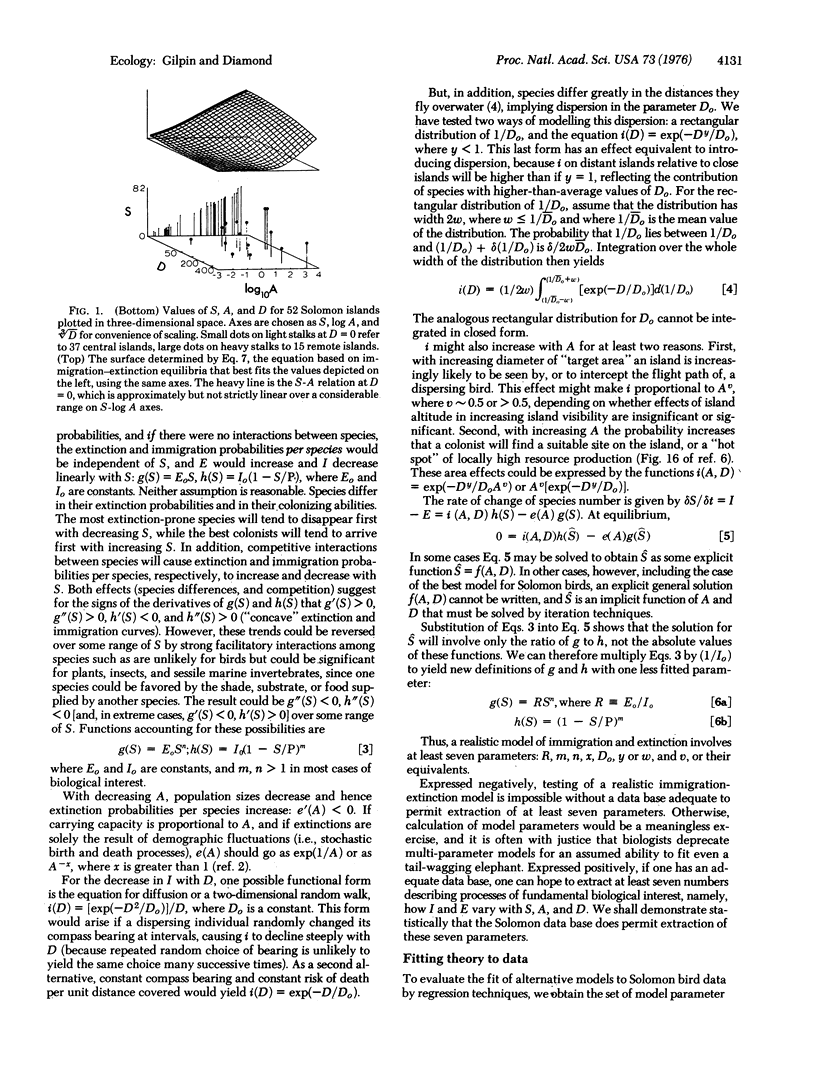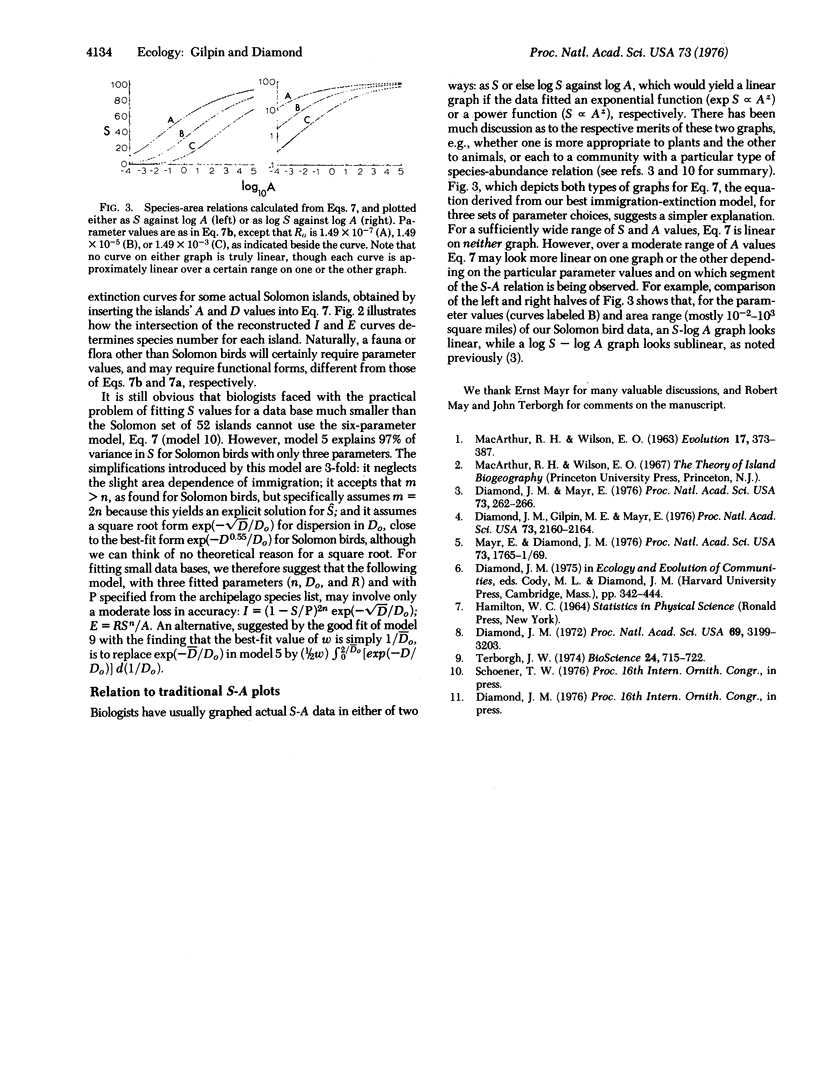Abstract
Quantitative models of the species-area-distance relation, based on equilibria between immigration and extinction rates, have been tested against data for birds on 52 Solomon islands. Biologically reasonable models account for 98% of the variance in species number. The data are adequate to permit determination of immigration and extinction curves and the values of seven associated parameters. The resulting curves are very concave. Extinction rates vary almost exactly as the reciprocal of area, but the effect of area on immigration rates is slight. Recognition of major differences among species in immigration and extinction rates and in dispersal distances proves essential to a successful model.
Keywords: biogeography, islands, models, birds, Solomon Archipelago
Full text
PDF




Selected References
These references are in PubMed. This may not be the complete list of references from this article.
- Diamond J. M. Biogeographic kinetics: estimation of relaxation times for avifaunas of southwest pacific islands. Proc Natl Acad Sci U S A. 1972 Nov;69(11):3199–3203. doi: 10.1073/pnas.69.11.3199. [DOI] [PMC free article] [PubMed] [Google Scholar]
- Diamond J. M., Gilpin M. E., Mayr E. Species-distance relation for birds of the Solomon Archipelago, and the paradox of the great speciators. Proc Natl Acad Sci U S A. 1976 Jun;73(6):2160–2164. doi: 10.1073/pnas.73.6.2160. [DOI] [PMC free article] [PubMed] [Google Scholar]
- Diamond J. M., Mayr E. Species-area relation for birds of the Solomon Archipelago. Proc Natl Acad Sci U S A. 1976 Jan;73(1):262–266. doi: 10.1073/pnas.73.1.262. [DOI] [PMC free article] [PubMed] [Google Scholar]
- Mayr E., Diamond J. M. Birds on islands in the sky: Origin of the montane avifauna of Northern Melanesia. Proc Natl Acad Sci U S A. 1976 May;73(5):1765–1769. doi: 10.1073/pnas.73.5.1765. [DOI] [PMC free article] [PubMed] [Google Scholar]


